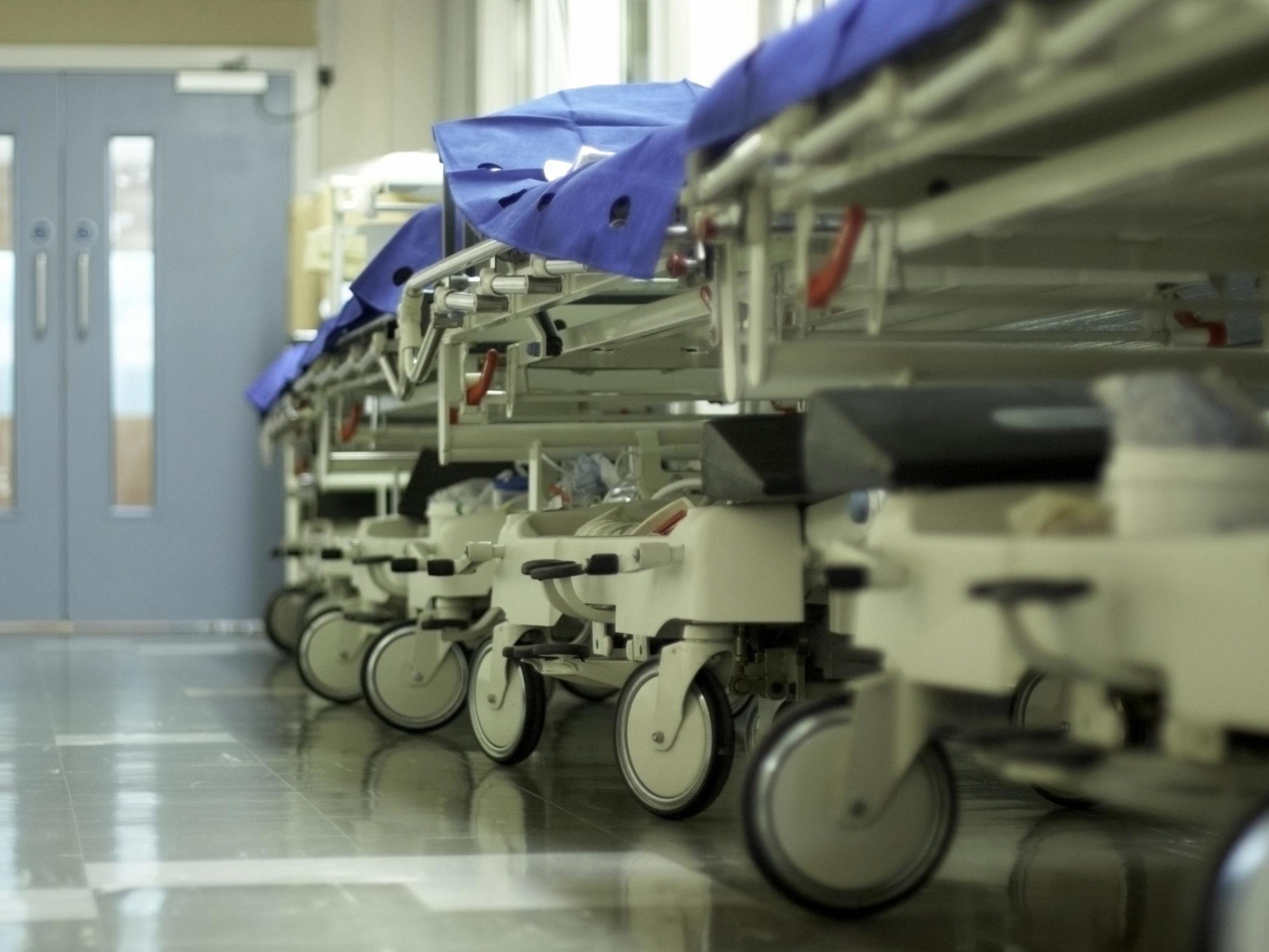Waiting times for A&E and hospital operations worst on record, NHS figures show
Government must deliver on its pledge to hire 50,000 more nurses, think tank says

Your support helps us to tell the story
From reproductive rights to climate change to Big Tech, The Independent is on the ground when the story is developing. Whether it's investigating the financials of Elon Musk's pro-Trump PAC or producing our latest documentary, 'The A Word', which shines a light on the American women fighting for reproductive rights, we know how important it is to parse out the facts from the messaging.
At such a critical moment in US history, we need reporters on the ground. Your donation allows us to keep sending journalists to speak to both sides of the story.
The Independent is trusted by Americans across the entire political spectrum. And unlike many other quality news outlets, we choose not to lock Americans out of our reporting and analysis with paywalls. We believe quality journalism should be available to everyone, paid for by those who can afford it.
Your support makes all the difference.The NHS has seen one of its worst months on records with tens of thousands of patients waiting on trolleys for a bed as emergency departments reported unprecedented demand.
New data published on Friday showed a dire performance across a range of measures in November – before the worst of the winter has really started.
Almost 30 per cent of patients in major hospital A&E departments waited longer than four hours to be seen, a 10 per cent increase compared to the same month last year and the worst performance on record.
For the first time, not one major A&E department in England met the four-hour waiting-time target.
Across all A&E departments, 81 per cent of patients were seen within four hours, a record poor performance against the target of 95 per cent which hasn’t been met since July 2015.
The average daily rate of patients admitted to hospital as an emergency hit 18,652 last month, the highest daily rate on record – a total of 559,556 for the month as a whole.
This demand is heaping pressure on hospital’s routine surgery, with the waiting list now at 4.6 million and only 85 per cent of patients treated within 18 weeks of referral. This was the worst performance since September 2008, according to the King’s Fund think tank.
Almost 89,000 patients were forced to wait longer than four hours on a trolley in A&E for a bed, while 1,112 patients waited more than 12 hours for a bed – also record-breaking figures.
Both these times are measured from when doctors decide to admit the patient, so the total wait in A&E will be substantially longer.
Ambulance services saw their busiest months on record as paramedics responded to 743,824 incidents, an average of almost 25,000 a day. November alone saw a further 6,700 life-threatening incidents.
Paramedics saw their highest ever level of daily trips to hospital with a patient at 14,356 trips a day.
The dire performance reflects data for November, but in recent days hospitals across the country have declared major incidents and reported record attendances in A&E.
In the week to 8 December, 28 A&Es were forced to put diverts in place while eight hospital emergency departments temporarily closed.
Public Health England has warned of a rise in flu deaths and patients with flu being admitted to hospital. The latest data triggered an alert from the government to GPs to allow them to start prescribing anti-viral medication.
Nigel Edwards, chief executive of the Nuffield Trust health think tank, said: “Returning to Downing Street, Boris Johnson has been met by an immediate reminder of the grim winter his government faces in the English NHS.”
He said the government would need to deliver on its pledges for 50,000 nurses adding: “We need a long-term commitment to funding for NHS infrastructure, not one-off announcements. And we need to finally see the overhaul of England’s failing social care system that has been pledged so many times.”
An NHS England spokesperson said: “These figures show that NHS teams across the country are providing a record-breaking level of care to the increasing numbers of people, at a time when norovirus and flu is having a greater impact on local services than last year.
“That’s why it’s more important than ever for the public to help NHS staff by getting flu jabs, following advice on the NHS website if they have norovirus, using the NHS 111 phone or online service for advice on urgent medical needs, and consulting their local pharmacist for advice on minor ailments.”
Join our commenting forum
Join thought-provoking conversations, follow other Independent readers and see their replies
Comments